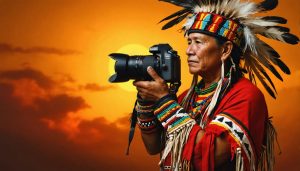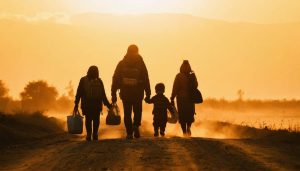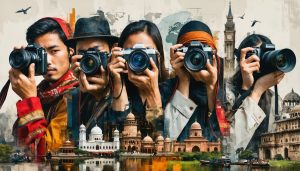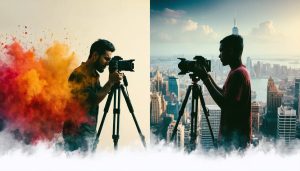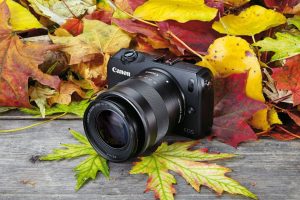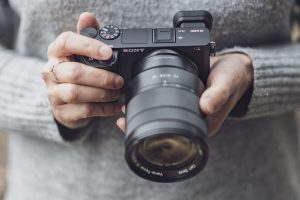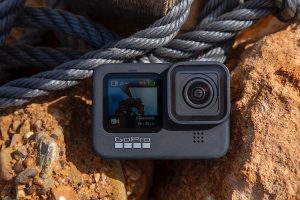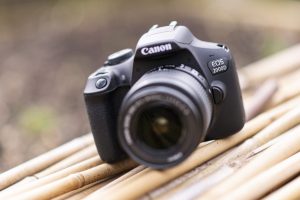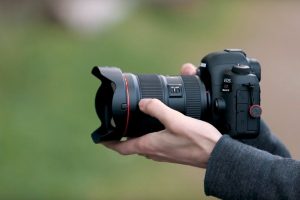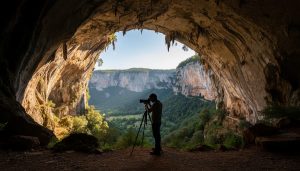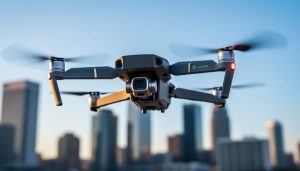
Standing at the intersection of environmental advocacy and visual storytelling, environmental photojournalists capture the raw, unfolding narratives of our planet’s most pressing ecological challenges. Through their lenses, they document everything from devastating wildfires and melting glaciers to endangered species and sustainable community initiatives, transforming complex environmental issues into powerful visual testimonies that demand attention and action.
These visual storytellers combine the technical precision of professional photography with investigative journalism’s rigor, often working in challenging conditions to document environmental changes, disasters, and conservation efforts. Their images serve as both historical records and catalysts for change, influencing public opinion, policy decisions, and environmental awareness on a global scale.
Unlike traditional photojournalism, environmental photojournalism requires a unique blend of scientific understanding, ecological awareness, and the ability to translate complex environmental concepts into compelling visual narratives. These photographers must navigate not only the technical challenges of their craft but also the ethical responsibilities of documenting communities and ecosystems in crisis, while maintaining the delicate balance between artistic expression and journalistic integrity.
As climate change and environmental issues become increasingly urgent, environmental photojournalists play a crucial role in bridging the gap between scientific data and public understanding, creating powerful visual stories that resonate with audiences and inspire environmental stewardship.
The Evolution of Environmental Photojournalism
From Conservation to Crisis
The evolution of environmental photojournalism reflects a profound shift in how photographers approach their craft and purpose. What began as primarily aesthetic nature photography has transformed into a powerful medium for environmental advocacy. As global environmental challenges intensified, photographers found themselves uniquely positioned to document not just the beauty of nature, but its vulnerability and transformation at human hands.
This transition has given rise to diverse photographic approaches, from capturing the devastating effects of climate change to highlighting successful conservation efforts. Environmental photojournalists now regularly embed themselves in communities affected by environmental disasters, document illegal logging operations, or track the impact of rising sea levels on coastal regions.
The shift has also demanded new technical and narrative skills. Today’s environmental photojournalists must master both traditional nature photography techniques and documentary storytelling methods. They need to capture not just dramatic moments but also subtle environmental changes over time, often returning to locations repeatedly to document transformations that might otherwise go unnoticed.
This evolution has created a new breed of visual storyteller – one who combines aesthetic sensitivity with journalistic integrity and environmental advocacy. Their work has become instrumental in raising awareness, influencing policy decisions, and inspiring public action on environmental issues.
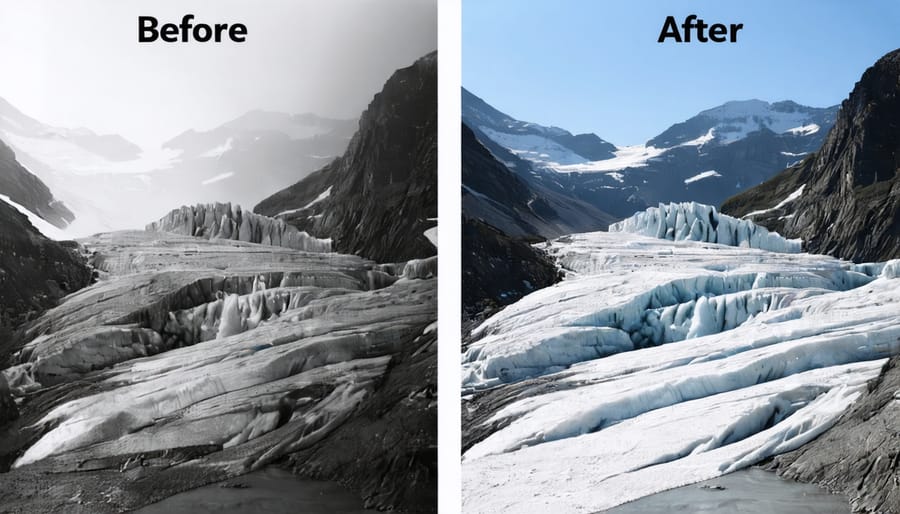
Digital Age Impact
The digital revolution has fundamentally transformed environmental photojournalism, creating both opportunities and challenges for storytellers in the field. Social media platforms now allow photographers to share their environmental stories instantly, reaching millions of viewers and potentially catalyzing immediate action on pressing issues. The ability to geotag locations and provide real-time updates has made tracking environmental changes more accessible and measurable than ever before.
Modern camera technology has also elevated the quality and scope of environmental storytelling. Drone photography offers unprecedented aerial perspectives of deforestation, pollution, and natural disasters, while underwater housings and remote cameras capture previously unreachable scenes of marine degradation and wildlife behavior. High-ISO capabilities and improved weather sealing enable documentation in challenging low-light conditions and extreme environments.
Digital platforms have democratized environmental storytelling, allowing citizen journalists to contribute to the global narrative. Smartphone cameras and editing apps have become powerful tools for documenting local environmental issues, while online communities facilitate collaboration between photographers worldwide. However, this accessibility also presents challenges, including the need to verify authenticity and maintain journalistic integrity in an era of digital manipulation.
Data-driven storytelling has emerged as a powerful complement to visual narratives. Photographers now integrate sensor data, satellite imagery, and scientific measurements into their work, creating comprehensive multimedia stories that combine emotional impact with empirical evidence.
Essential Gear and Techniques
Camera Equipment for Harsh Conditions
Environmental photojournalists often find themselves in challenging conditions, from scorching deserts to humid rainforests, requiring specialized gear that can withstand nature’s extremes while delivering professional results.
Weather-sealed cameras are essential for this type of work, with models like the Nikon D6 and Canon 1DX Mark III being popular choices among professionals. These cameras feature robust magnesium alloy bodies and extensive sealing against moisture and dust. For more budget-conscious photographers, mid-range weather-sealed models like the Sony A7 III offer excellent protection at a lower price point.
Lens protection is equally crucial. UV filters serve a dual purpose – protecting the front element from scratches and reducing haze in high-altitude situations. Quick-draw lens covers and specialized lens hoods help shield equipment from unexpected rain or sandstorms. Many photographers also carry silica gel packets to combat humidity and waterproof dry bags for extra protection during transport.
For extreme environments, specialized housing units become necessary. Underwater housings allow documentation of marine ecosystems, while arctic-rated cases protect gear in sub-zero temperatures. Heat shields and cooling systems are vital for desert work, where temperatures can soar well above what standard equipment can handle.
Battery management requires special consideration. Cold weather dramatically reduces battery life, so carrying multiple spares is essential. Solar charging solutions have become increasingly popular among photographers working in remote locations for extended periods.
Memory cards should be chosen with environmental conditions in mind. High-end cards with better temperature tolerance and moisture resistance are worth the investment. Many photographers use dual card slots for immediate backup, protecting precious footage from card failures in harsh conditions.
Cleaning kits tailored for field use are indispensable. These typically include sensor cleaning supplies, lens cloths, and compressed air – all stored in waterproof containers. A good rule of thumb is to clean equipment daily when working in challenging environments, as dust and moisture can quickly compromise image quality and equipment functionality.
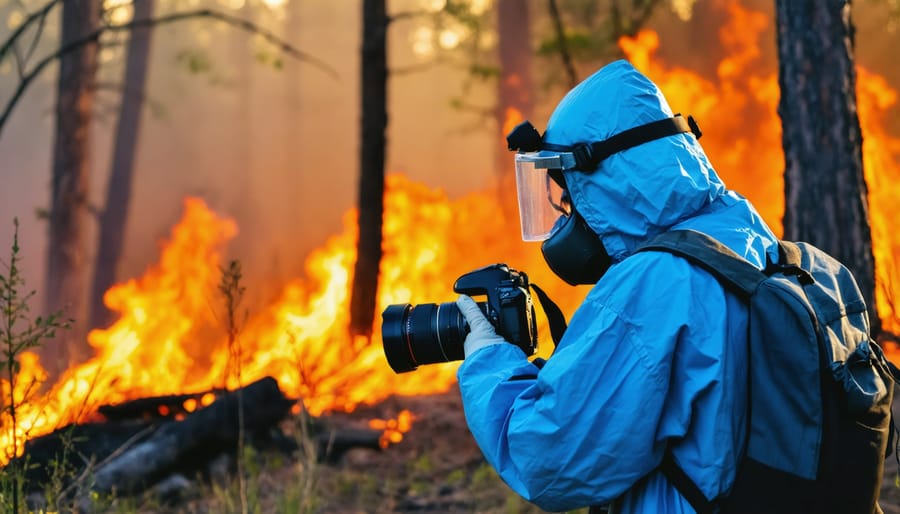

Field Techniques and Approaches
Successful environmental photojournalists combine technical expertise with storytelling skills to capture compelling narratives about our planet. The most effective approach often starts with thorough research and pre-planning, identifying key locations, understanding local conditions, and establishing connections with communities or experts involved in the story.
Getting close to the subject while maintaining respect for both the environment and its inhabitants is crucial. This often means using a variety of lenses – from wide-angle shots that capture the scale of environmental issues to macro lenses that reveal intimate details of affected flora and fauna. Many photographers employ the “shoot from three” technique: capturing wide establishing shots, medium shots for context, and close-ups for emotional impact.
Timing plays a vital role in environmental photography. Dawn and dusk typically offer the most dramatic lighting conditions, but documenting environmental issues often requires shooting in challenging conditions or waiting patiently for key moments to unfold. Whether it’s capturing the immediate aftermath of environmental disasters or documenting slow-changing phenomena like glacier retreat, understanding when to be present is as important as knowing where to be.
Environmental photojournalists often work with multiple techniques to tell a complete story. This might include aerial photography to show the scale of deforestation, underwater photography to document marine pollution, or time-lapse sequences to illustrate environmental change over time. Many combine still photography with video footage and audio recordings to create more immersive storytelling experiences.
Documentation and captioning are equally important as the technical aspects. Accurate records of locations, dates, and contexts help maintain the journalistic integrity of the work. Many photographers also maintain field journals, recording not just technical details but also observations, interviews with local people, and personal reflections that can later enhance the narrative of their visual story.
Safety and ethical considerations should always be paramount. This includes both physical safety when working in challenging environments and ethical guidelines about representing environmental issues and affected communities truthfully and respectfully.
Storytelling Through the Lens
Visual Narrative Elements
Environmental photojournalism relies heavily on compelling visual elements that work together to tell impactful stories. Understanding these elements is crucial for creating powerful visual narratives that resonate with viewers and drive environmental awareness.
Composition plays a vital role in conveying environmental messages. Using leading lines to guide viewers through devastated landscapes, or implementing the rule of thirds to highlight the contrast between pristine and polluted areas can dramatically enhance your storytelling. Scale is particularly important – incorporating recognizable elements to demonstrate the magnitude of environmental issues helps viewers connect with the subject matter.
Color and lighting choices significantly impact the emotional resonance of environmental photographs. Warm golden hour light can emphasize the beauty of threatened ecosystems, while harsh midday lighting might better illustrate the severity of drought conditions. Different global visual storytelling approaches may interpret these elements differently, but the fundamental goal remains the same: creating emotional connections.
Sequential storytelling is another powerful tool, where multiple images work together to show cause and effect, or changes over time. This might include before-and-after shots of deforestation, or a series documenting the progression of environmental restoration projects.
The human element should never be overlooked – including people in environmental photographs helps viewers relate to abstract issues on a personal level. Whether it’s showing communities affected by climate change or individuals working on conservation projects, these connections make environmental stories more compelling and actionable.
Ethics and Responsibility
Environmental photojournalists bear a significant responsibility in documenting and sharing crucial environmental stories, making ethical considerations paramount to their work. The first fundamental principle is accuracy – images must truthfully represent environmental situations without manipulation or staging that could mislead viewers.
When photographing environmental disasters or their impact on communities, photographers must balance the need to document with respect for affected individuals. This includes obtaining proper consent, especially when working with vulnerable populations, and understanding how indigenous perspectives in environmental documentation can inform more respectful and comprehensive coverage.
Wildlife photography ethics are equally crucial. Maintaining safe distances, avoiding disruption of natural behaviors, and never baiting animals for shots are non-negotiable principles. Additionally, photographers must be transparent about their methods and avoid creating situations that could harm ecosystems or encourage unsafe practices by others.
Digital editing presents another ethical consideration. While basic adjustments for exposure and color correction are acceptable, any manipulation that alters the fundamental truth of an environmental situation crosses an ethical line. Photographers should maintain detailed records of their editing processes and be prepared to defend their choices.
Finally, environmental photojournalists must consider the broader impact of their work. This includes being mindful of their own carbon footprint while on assignment, properly crediting indigenous knowledge and local experts, and ensuring their work contributes to environmental awareness rather than exploitation. The goal should always be to inform and inspire positive change while maintaining the highest standards of journalistic integrity.
Making an Impact
Distribution and Platforms
In today’s digital age, environmental photojournalists have numerous platforms to share their work and reach global audiences. Social media platforms like Instagram and Twitter serve as powerful tools for immediate impact, allowing photographers to share urgent environmental stories in real-time. Instagram’s visual-first approach particularly suits environmental storytelling, while Twitter enables quick dissemination of breaking environmental news with accompanying images.
Traditional media outlets remain crucial distribution channels, with established publications like National Geographic, The Guardian, and Reuters maintaining dedicated environmental sections. These platforms offer credibility and reach while allowing for in-depth storytelling through photo essays and multimedia presentations. Many environmental photojournalists also collaborate with NGOs and environmental organizations, which can provide additional distribution channels through their networks and campaigns.
Digital publishing platforms like Medium and Exposure have created new opportunities for long-form visual storytelling, where photographers can combine compelling imagery with detailed narratives. These platforms also allow for the integration of cultural influences in photography, enriching environmental stories with diverse perspectives.
Personal websites and portfolios remain essential, serving as comprehensive showcases of work and establishing professional credibility. Many successful environmental photojournalists also utilize email newsletters to maintain direct connections with their audience and share behind-the-scenes insights into their projects.
Emerging technologies like virtual reality and augmented reality are opening new frontiers for environmental storytelling, allowing audiences to immerse themselves in threatened environments and experience environmental issues firsthand. These innovative platforms can create powerful emotional connections and drive environmental awareness in ways traditional photography cannot match.
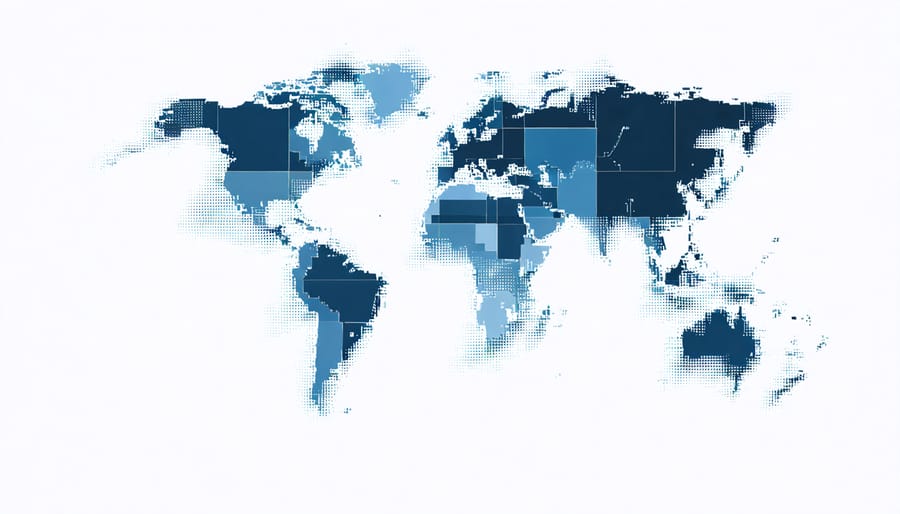
Measuring Success
Success in environmental photojournalism extends beyond capturing stunning images – it’s about creating measurable impact and driving positive environmental change. The effectiveness of a project can be evaluated through multiple metrics, both quantitative and qualitative.
Media reach is a primary indicator, tracking how many people your work reaches through publications, social media engagement, and exhibition attendance. However, deeper impact metrics often prove more valuable. These include policy changes influenced by your photography, community actions sparked by your stories, and conservation initiatives funded as a result of your work.
Engagement metrics help gauge how deeply your message resonates. Monitor comments, shares, and discussions generated by your work. Pay attention to whether your images are being used by environmental organizations, cited in research papers, or featured in educational materials. These indicators suggest your work is contributing to environmental awareness and education.
Building a portfolio of documented impact cases strengthens your credibility and effectiveness. Keep detailed records of how your images have been used, what changes they’ve influenced, and testimonials from stakeholders. For instance, if your photos of plastic pollution led to a local beach cleanup initiative or influenced municipal policies, document these outcomes.
Consider partnering with environmental organizations to establish clear goals and measurement frameworks for your projects. This collaboration can help track specific metrics like changes in protected area coverage, wildlife population numbers, or community behavioral shifts that your work helps facilitate.
Remember that some impacts take time to materialize. Regular follow-ups with communities and subjects featured in your stories can reveal long-term effects that might not be immediately apparent.
Environmental photojournalism stands at a crucial intersection of art, advocacy, and documentation in our rapidly changing world. As climate change and environmental challenges become increasingly urgent, the role of environmental photojournalists has never been more vital. These visual storytellers serve as both witnesses and catalysts for change, bringing critical environmental issues into sharp focus for global audiences.
Looking ahead, technological advances are expanding the possibilities for environmental photojournalism. Drone photography, underwater cameras, and improved low-light capabilities are enabling photographers to capture previously unreachable perspectives and tell even more compelling stories. Additionally, social media and digital platforms have created new opportunities for environmental photojournalists to reach wider audiences and create immediate impact with their work.
However, the future also presents challenges. As traditional media outlets face budget constraints, many environmental photojournalists are adapting by becoming independent storytellers, partnering with NGOs, or exploring innovative funding models. Despite these challenges, the demand for high-quality environmental photography continues to grow as organizations, publications, and the public seek authentic visual documentation of our changing planet.
The success of environmental photojournalism ultimately lies in its ability to move people to action. Whether documenting deforestation in the Amazon, plastic pollution in our oceans, or community-led conservation efforts, these images have the power to shape public opinion and influence policy decisions. For aspiring environmental photojournalists, the field offers not just a career path, but an opportunity to contribute meaningfully to environmental awareness and conservation efforts worldwide.


